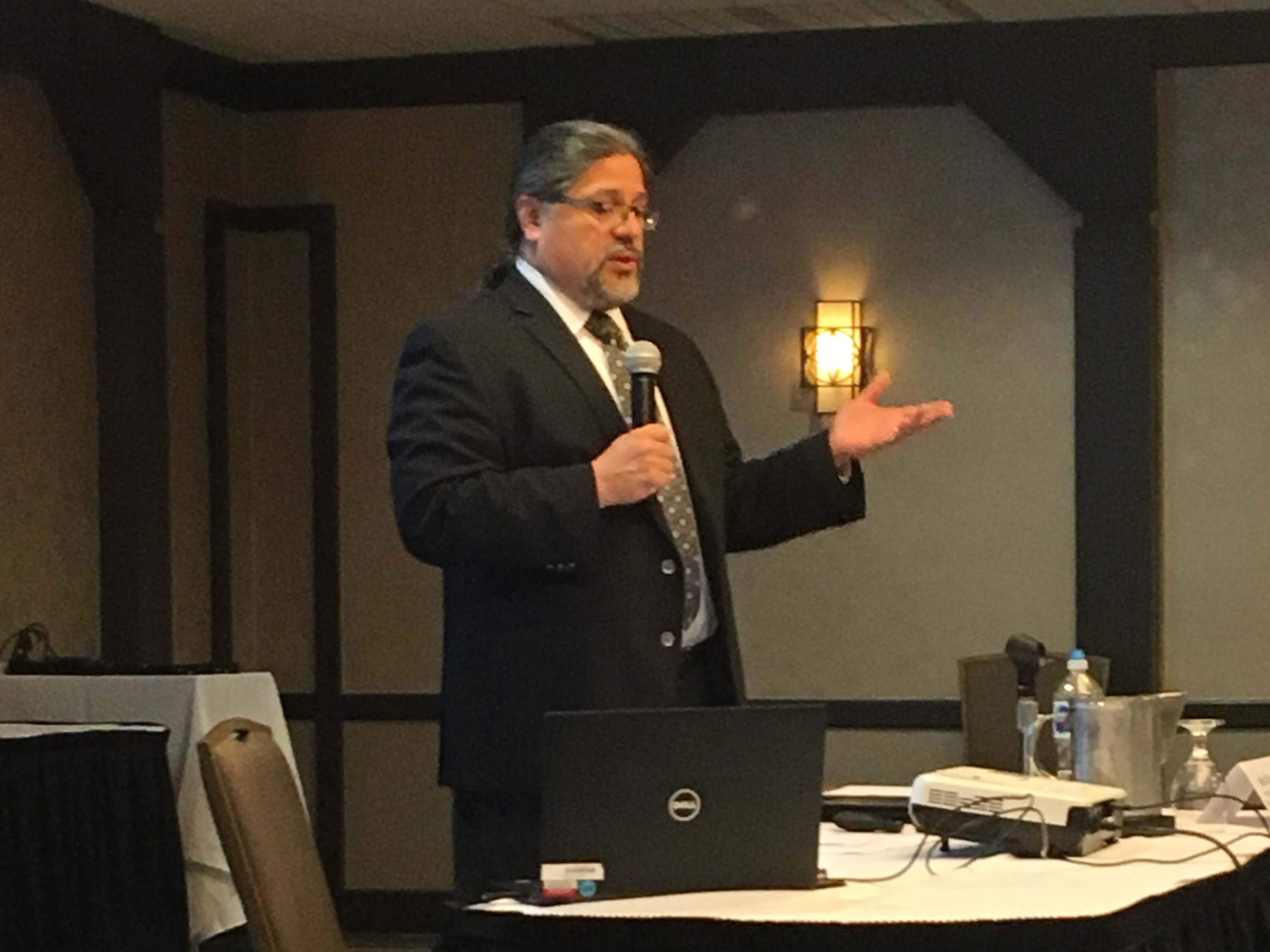The Question: To Unify or Not To Unify
Dept. of Interior conducts listening sessions with Tribal leaders on reorganization proposal
By Rosemary Stephens, Editor-in-ChiefCheyenne & Arapaho Tribal Tribune Correspondent
c-a-tribes.org/tribal-news The Department of Interior (DOI) Office of the Assistant Secretary of Indian Affairs, Principal Deputy Assistant John Tahsuda hosted consultations in Montana, New Mexico, Michigan, California, Alaska, and most recently at the Embassy Suites in Oklahoma City on August 7. The consultations was part of a listening tour to gather input from Tribes directly impacted by a major DOI reorganization proposal. On March 13, 2017, President Donald Trump signed Executive Order 13781 for Federal Agencies to examine ways it could reorganize to improve efficiency, effectiveness and accountability. The Secretary of the Interior Ryan Zinke announced his vision to establish 13 unified regional office boundaries across all the Department’s Bureaus. Tahsuda stated the DOI has not been reorganized in 150 years, “despite all that has changed.” The goals listed for the reorganization include reducing administrative redundancies and maximizing use, improve service to people, improve communication and coordination across agencies and streamlining the decision process. “All bureaus in the regions can make decisions in these regions without having to come to Washington, D.C., making the decision process faster and more efficient,” Tahsuda said. Currently there are nine bureaus with 61 regions in operation, with over 70,000 employees. The proposal being discussed, not yet written, is combining the 61 regions into 13 unified regions.
The biggest obstacle that faced Tahsuda from Tribal leaders in the room was the aura of mistrust surrounding the Bureau of Indian Affairs (BIA), the Trump administration and the overall federal government. Mistrust developed from years of broken treaties between the federal government and Tribes. “The secretary wanted to make sure you knew this was your decision on the behalf of the Tribes to decide whether you would like your region to participate in the unified regions. From there we will have more discussions and more consultations,” Tahsuda said. Tahsuda displayed a color coded map showing what the 13 unified regions with Tribal lands and existing BIA regions would look like, as he prepared to turn the meeting over to Tribal leaders for their input. “I see it two ways, you can say, ‘well we really don’t want our region to participate in that, we would like to keep ourselves separate,’ which is fine, it’s your decision, but we will have to have a conversation about what that means for our region to effectively participate in the now reunified regions. We will have to figure that out. If you decide that it’s a good idea and would like to talk further about how it’s going to work, than we will have further discussion about how our BIA region can participate in the reunified region and how it’s going to impact you,” Tahsuda said.Today's Tribal Consultation on the DOI Reorg was held in Oklahoma City, where attendance was estimated at exceeding 130 people!
— Indian Affairs (@USIndianAffairs) August 7, 2018
Thank you, Tribal Leaders, for submitting your valuable comments on this important issue!
For an updated schedule, visit https://t.co/4ShUugRBJ3. pic.twitter.com/h0ULUsBAPD

Public Information Office
700 North Black Kettle Blvd.
Concho, OK 73022
P.O. Box 167
Editor in Chief Rosemary Stephens can be reached at rmstephens@c-a-tribes.org

Join the Conversation

